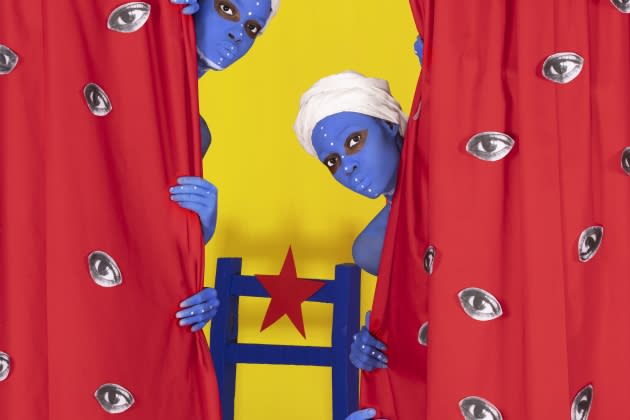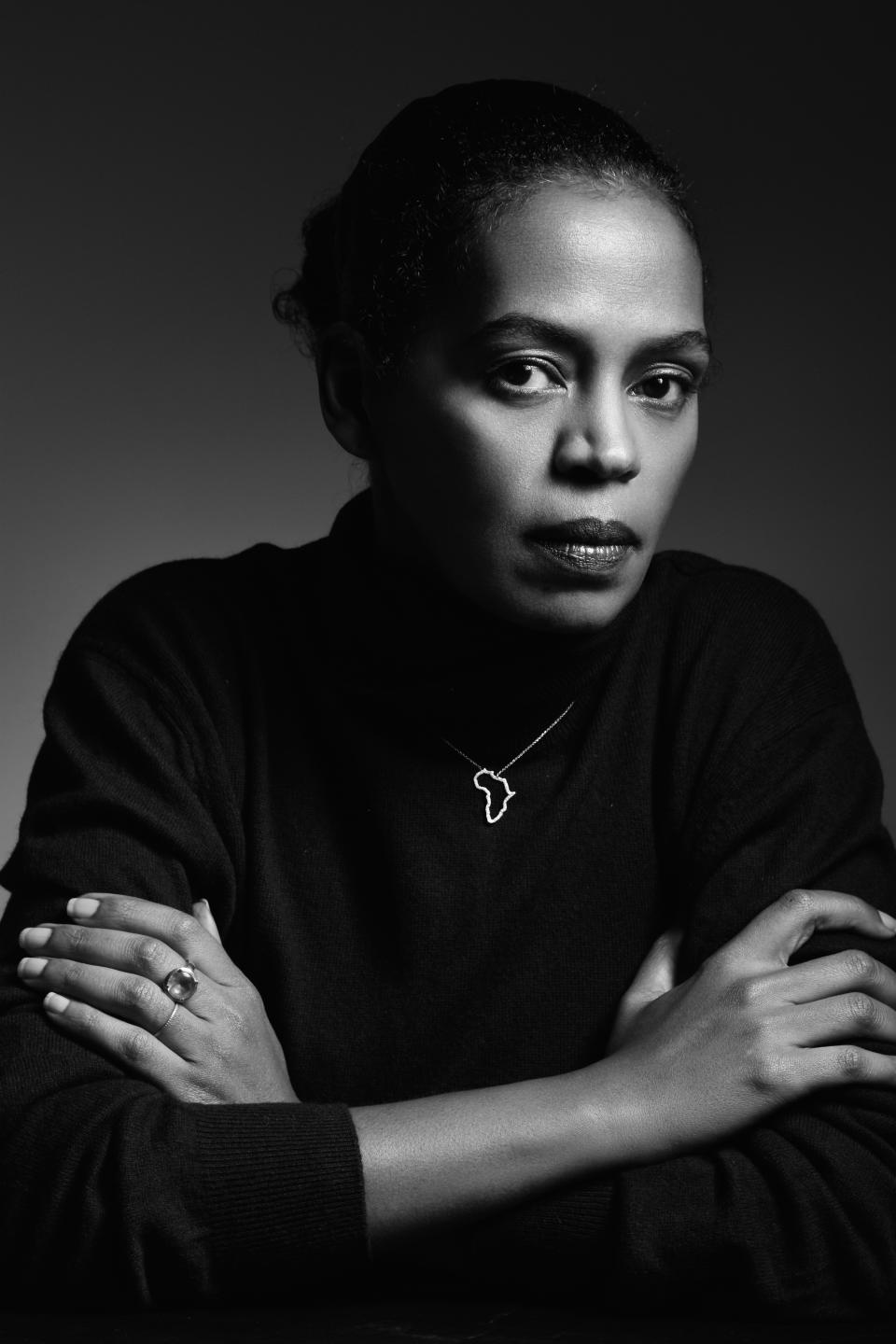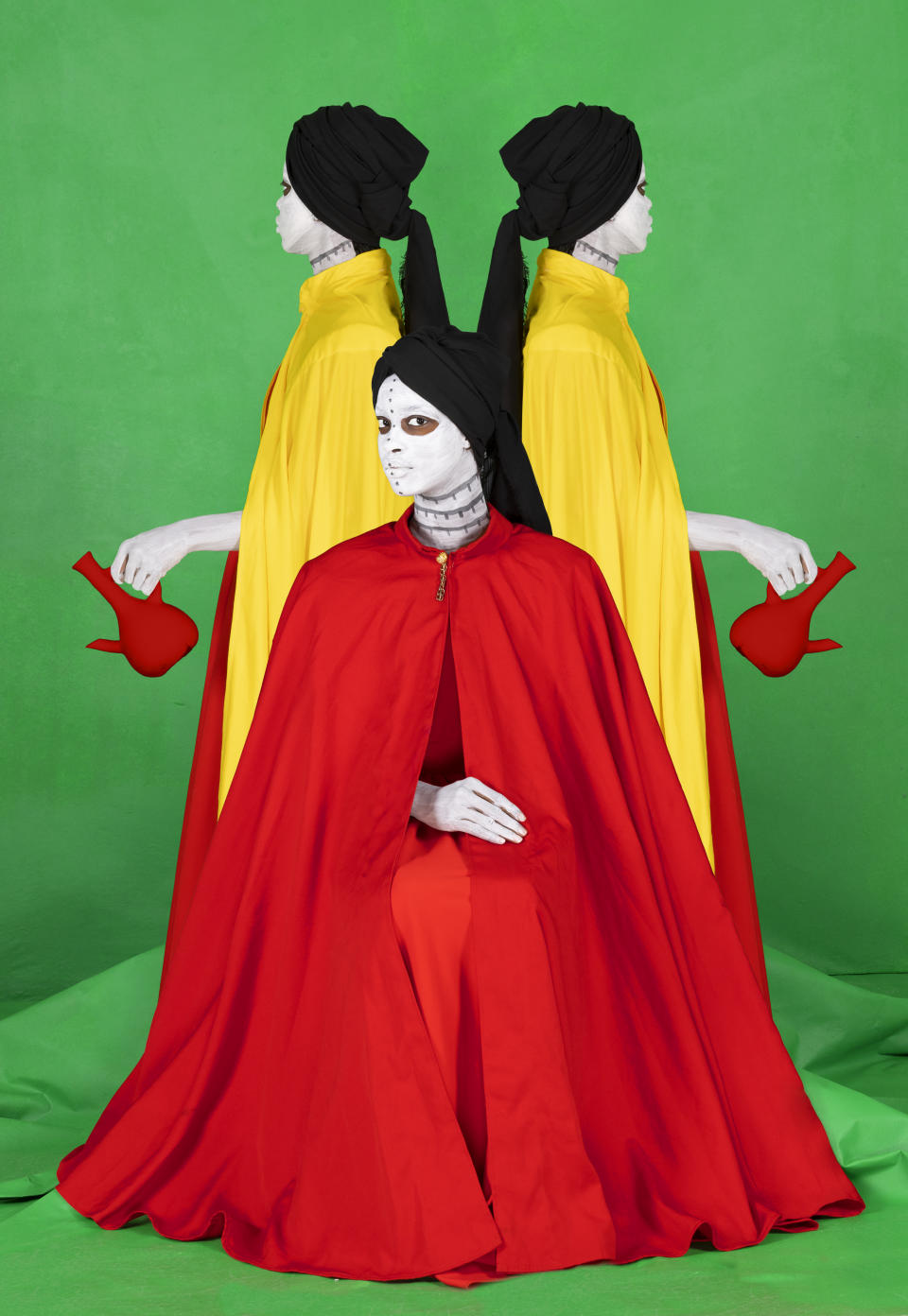Aida Muluneh Is Bringing Art to the People

Photographer Aida Muluneh has spent a lot of time waiting for the bus. As a high school student in Calgary, Canada, her wait was compounded by the area’s fierce winters.
“The one dreaded thing was not just walking to the bus station, but waiting for that bus to come. And then what you have around you is whatever advertisement is there,” says Muluneh, who is based between Abidjan, Côte d’Ivoire, Dubai, United Arab Emirates, and her hometown of Addis Ababa, Ethiopia. “What Public Art offers to the general public is almost a provocation: to think about art in a setting where you usually would not find art.”
More from WWD
The photographer is Zooming in from her studio in Abidjan, the capital of Côte d’Ivoire. She’s currently without electricity — although a common occurrence in Ethiopia, energy shortages are rare in Abidjan — and soon turns off her camera to conserve battery.
The Public Art Fund tapped Muluneh for the latest edition of its public art installation in collaboration with outdoor advertising corporation JCDecaux. The photographer’s work will be shown in bus shelters across New York, Boston, Chicago, and Côte d’Ivoire, marking the first time that the Public Art Fund has commissioned work in Africa.
“I’m a big fan of outdoor installations,” says Muluneh. “So whenever I have an opportunity to showcase my work outdoors, I usually grab it.”
Her exhibition, titled “This is where I am” after a poem by Ethiopian writer Tsegaye Gabre-Medhin, launches in March and includes 12 new photographs.
“Having lived in many parts of the world, there’s always this question of my place. What do I define as home?” says Muluneh, describing the poem’s resonance with her work. “I come from a culture where everything has double meanings,” she adds. “I found the title fitting because there were a lot of questions about where I stand on things, and there’s always questions of where I stand. And I always say: just look at my work, and you’ll come up with the interpretations as it relates to what you see in it.”

Muluneh, who studied film at Howard University in Washington, D.C. — and later worked as a photojournalist for The Washington Post — approaches her photos with a cinematic mindset. Her surreal and striking images are carefully composed and planned; from a conceptual sketch, clothing is constructed, backgrounds are painted, and models are arranged in specific rigid poses.
“The women that you see in the images, they’re my vessels of the things that I want to say,” says Muluneh, who frequently collaborates with the same group of models for her images. “I’m looking for the intensity of the gaze — and it’s the eyes that everybody focuses towards.”
In her photograph “The weakness of power,” the eyes are particularly central — two models in blue paint peer intently from behind a red curtain, festooned with black-and-white eye printouts. Muluneh works largely using primary colors as her palette, rendered in saturated hues. Another work, “To speak in silence,” reflects the green, yellow and red of the traditional Ethiopian flag.
“The color is just the seduction to get you into the image,” she says of her palette. “But within that image, there’s a lot of layers.”

In addition to her work with the Public Art Fund, Muluneh has headed up several initiatives to bring art to a broader audience within Africa. Last year she launched the Africa Foto Fair, an online platform to support African image-makers and empower young artists. The inaugural edition launched with an in-person exhibition on view at the Musée des Cultures Contemporaines Adama Toungara (MuCAT) in Abidjan, Côte d’Ivoire.
“Here in Côte d’Ivoire, we’re confronting a public that probably does not go to look at exhibitions. We’re bringing the art to their doorstep,” she says. “It’s not just about these highbrow institutions being the only source of consuming art; we have to also engage more with bringing art to the people. And that’s where I think this is even more relevant in the context of Africa,” Muluneh continues. “How do we get the general public into these spaces to look at work? Because there’s also this perception that these places are only accessible by a certain class of people, certain groups of people.”
Muluneh notes that the MuCAT show has seen strong attendance from the immediate area since it opened late last year — proof that if you create opportunities to engage with art, people will respond.
“It gives you a sense of why it is relevant to open up spaces and to inspire the generation that needs to see this, especially a youth that often doesn’t have art education embedded within their curriculums,” she adds. “I think art needs to be accessible to all because we are talking about beauty — and we’re talking about being a witness to the society we come from.”
Best of WWD


